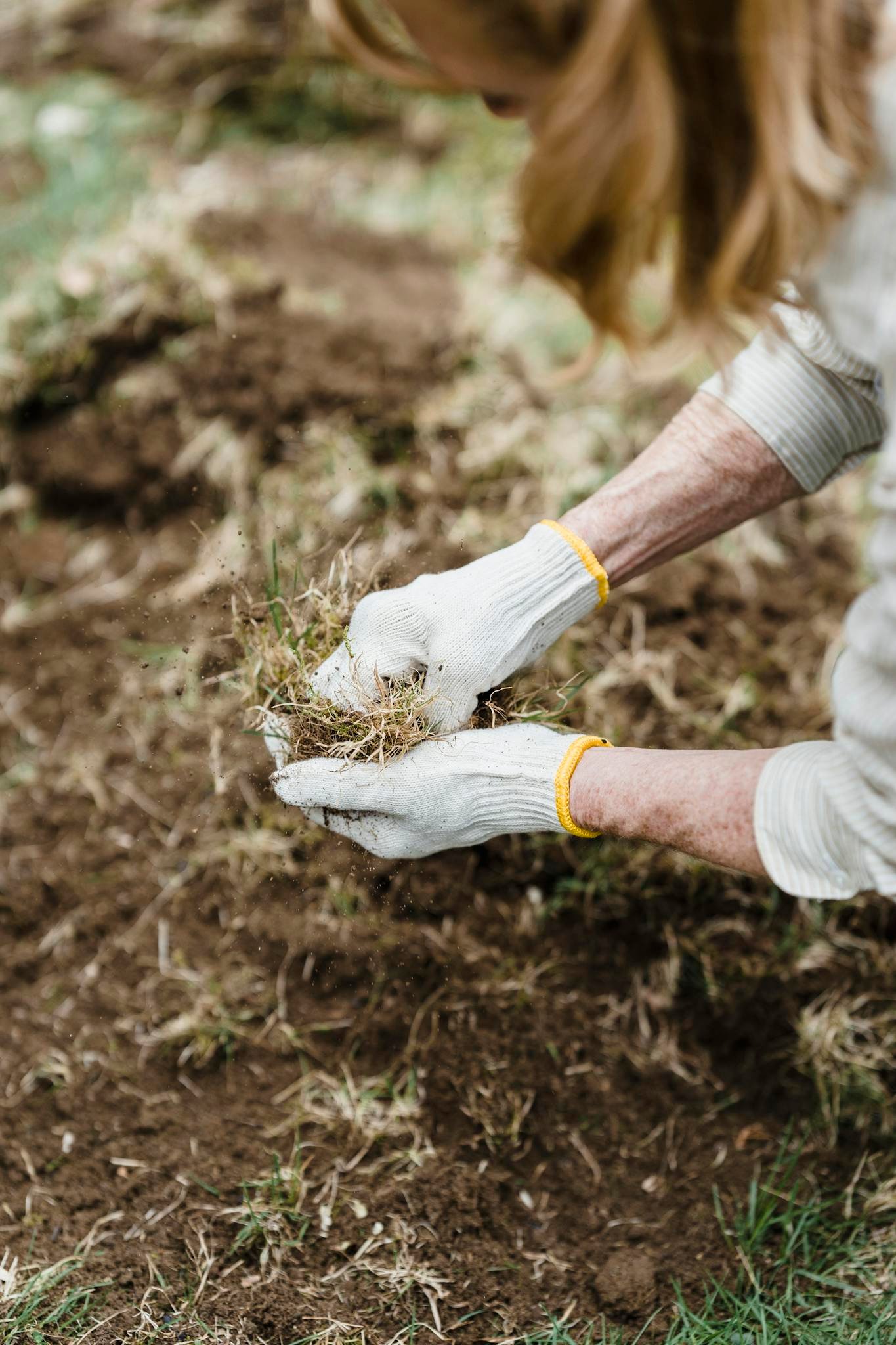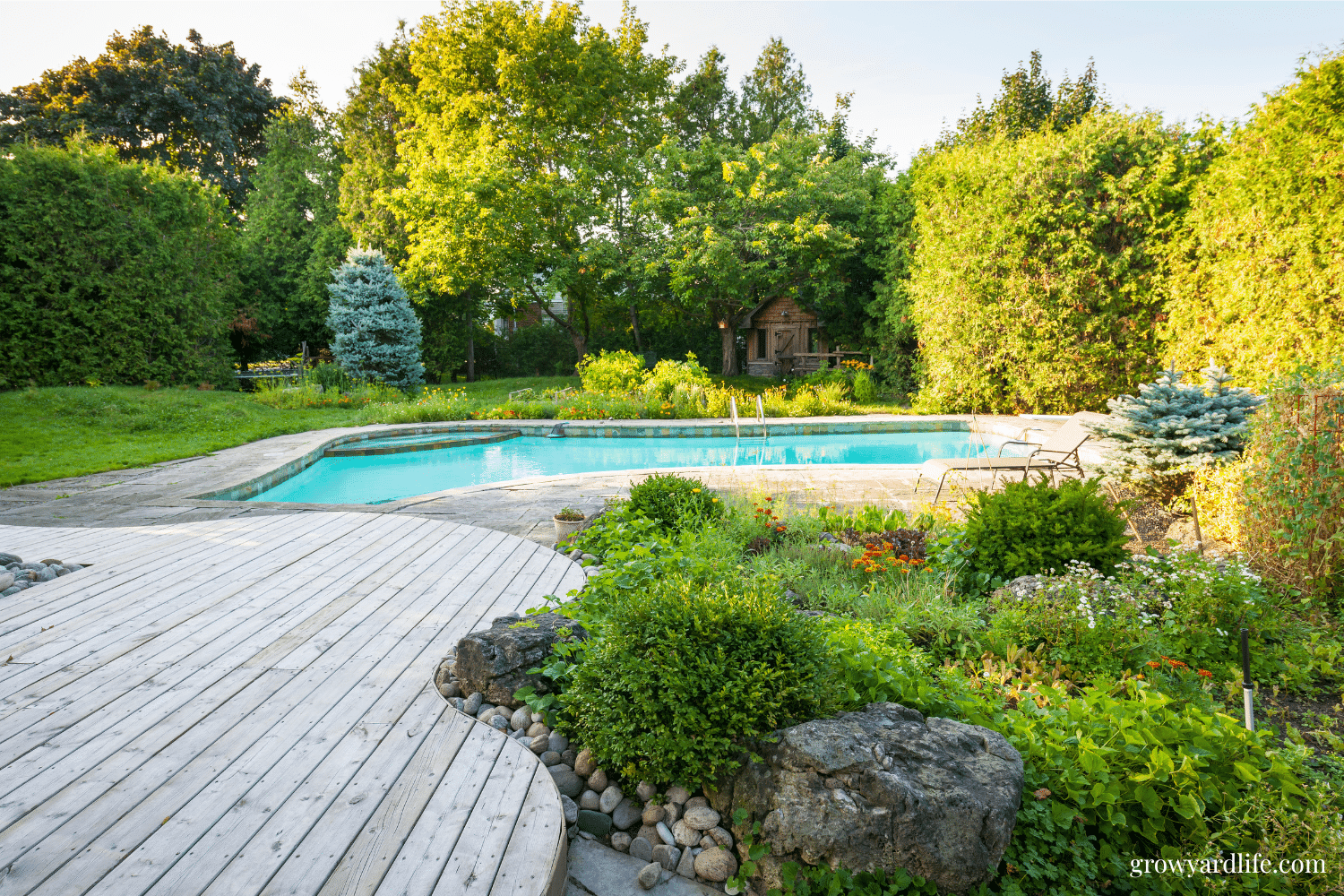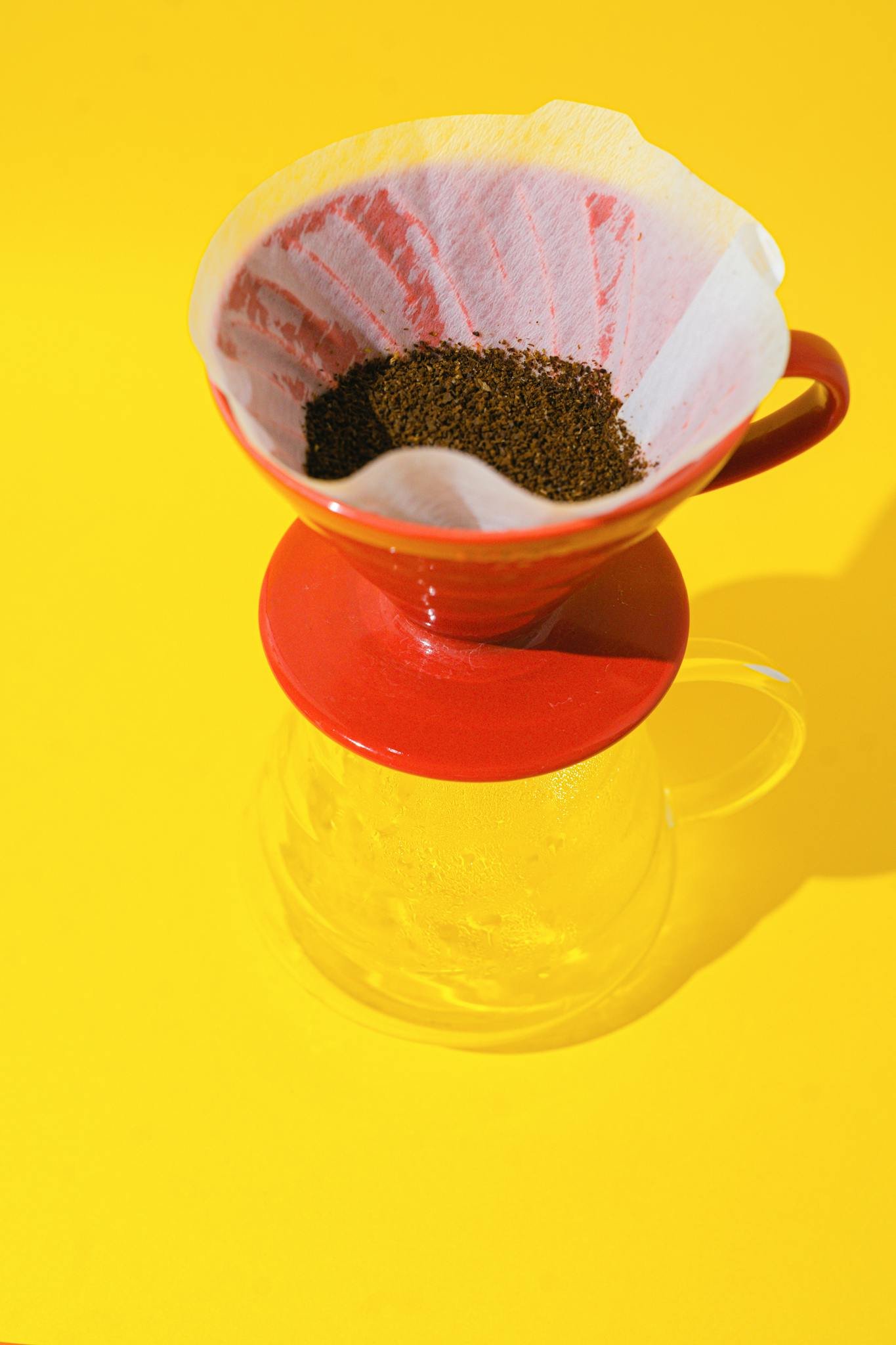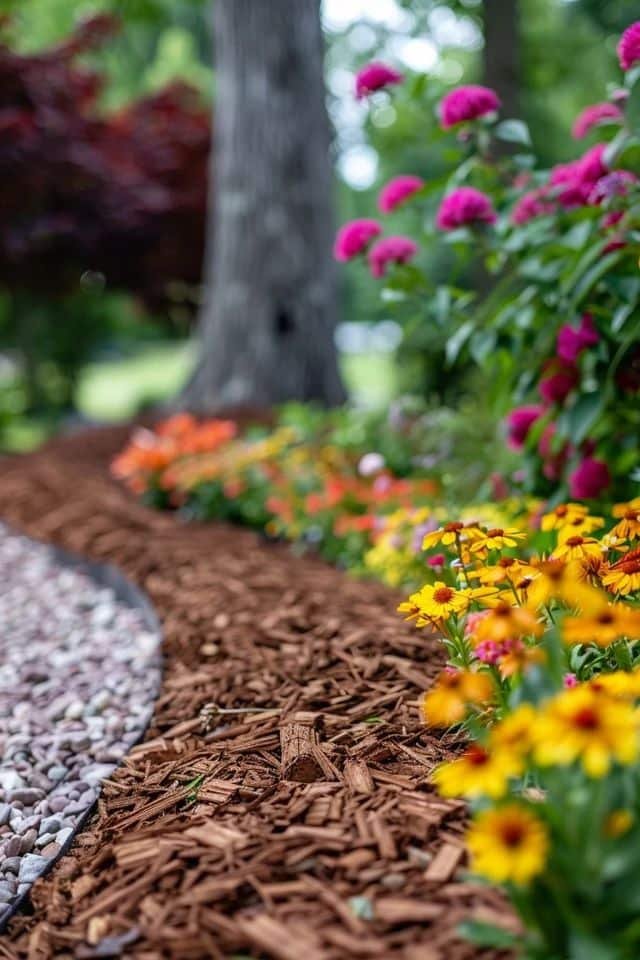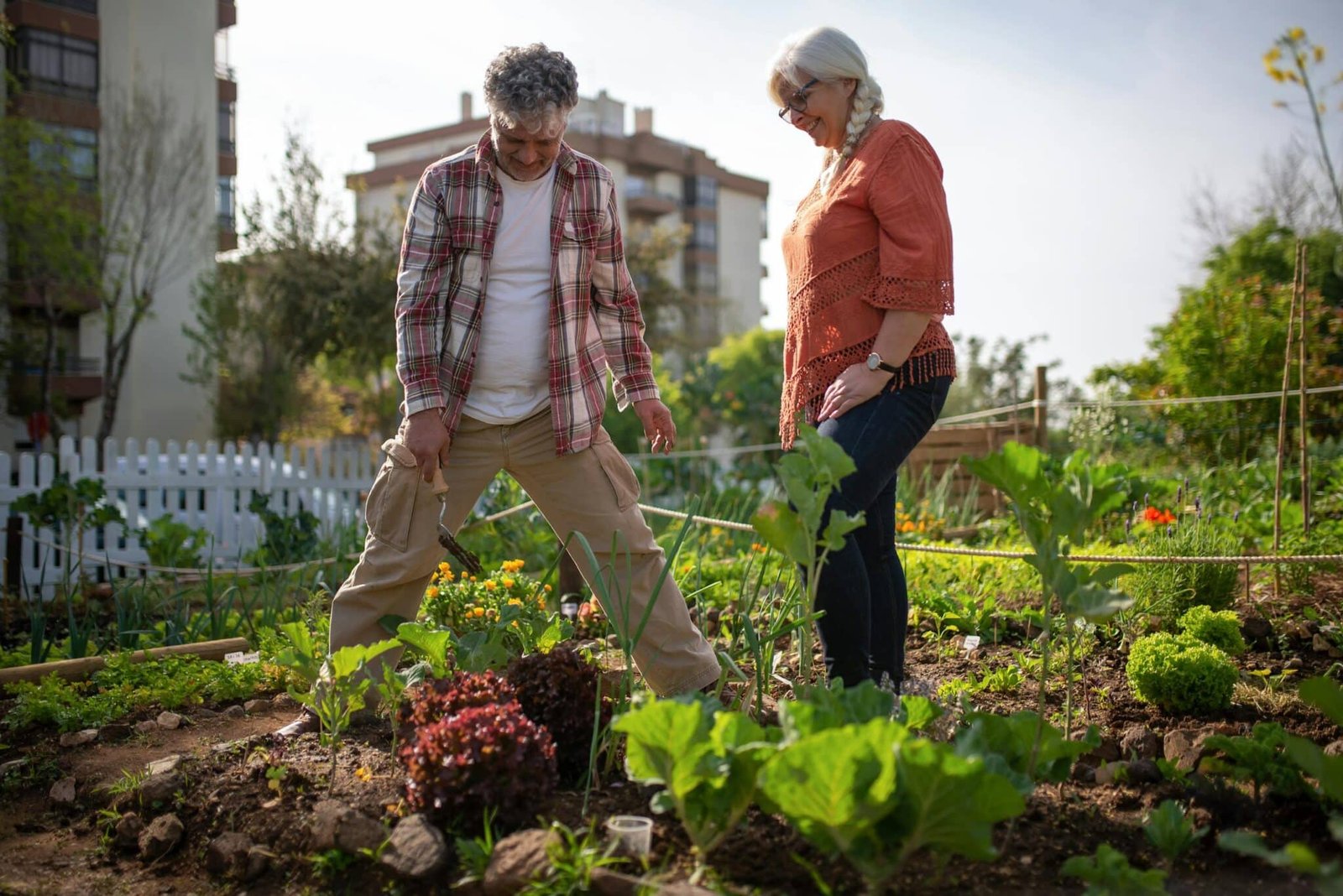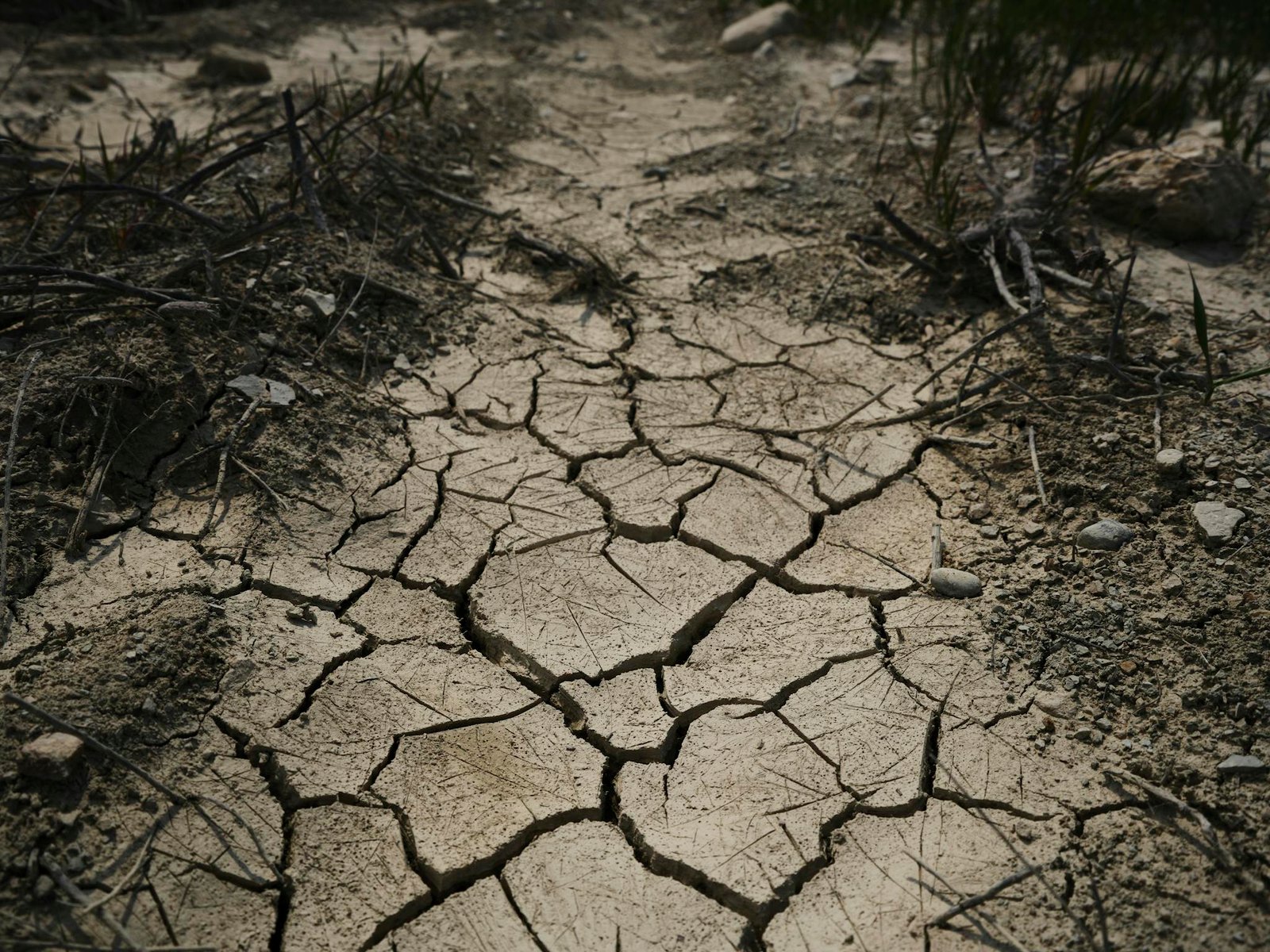15 Creative No Dig Gardening Ideas for Effortless Gardening
No Dig Gardening is a simple and efficient way to grow plants without the hassle of traditional tilling. This method encourages healthy soil and reduces weeds while promoting a thriving garden ecosystem. To keep your no dig garden in tip-top shape, focus on adding organic matter like compost regularly, and use mulch to retain moisture and suppress weeds. With just a bit of care and creativity, you can enjoy a lush, productive garden without the back-breaking work!
Preparing Your Garden Area
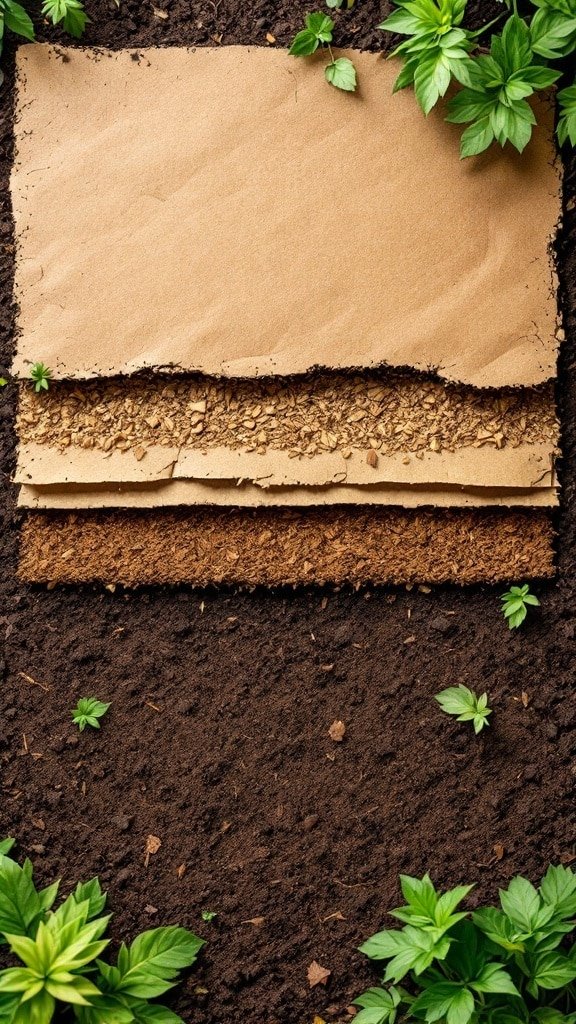
Starting a no dig garden can be simple and rewarding. The image shows layers of cardboard and mulch laid on the soil, which is a great method to prepare your garden area. This technique helps suppress weeds, retain moisture, and improve soil quality over time.
First, you’ll want to clear the area of any existing weeds or grass. Lay down sheets of cardboard directly on the soil. This will smother any unwanted plants and create a barrier for new growth. Next, add a layer of organic mulch, like straw or wood chips, on top of the cardboard. This not only keeps the moisture in but also breaks down over time, enriching the soil below.
Planting Techniques for No Dig Gardens
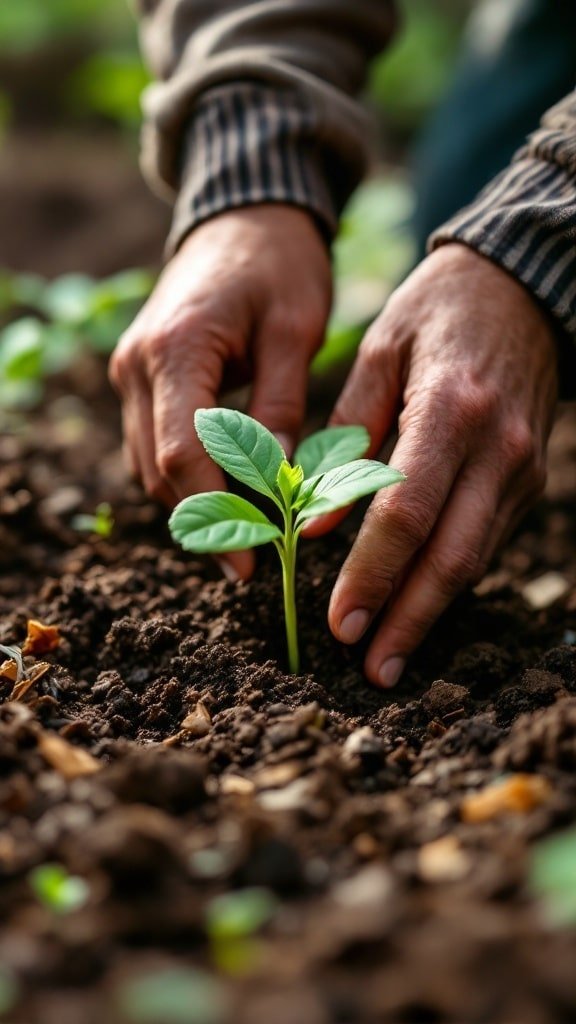
No dig gardening is a simple and effective way to grow your own food while keeping the soil healthy. In the image, we see hands carefully planting a young seedling in rich, dark soil. This method encourages the natural ecosystem of the soil to thrive, allowing plants to establish deeper roots.
When planting, start by preparing the area with compost and organic materials. Lay down layers without tilling the soil. This helps in maintaining moisture and nutrients. After that, gently create holes for your seedlings. Make sure to space them according to their needs, so they have room to grow.
Understanding No Dig Gardening
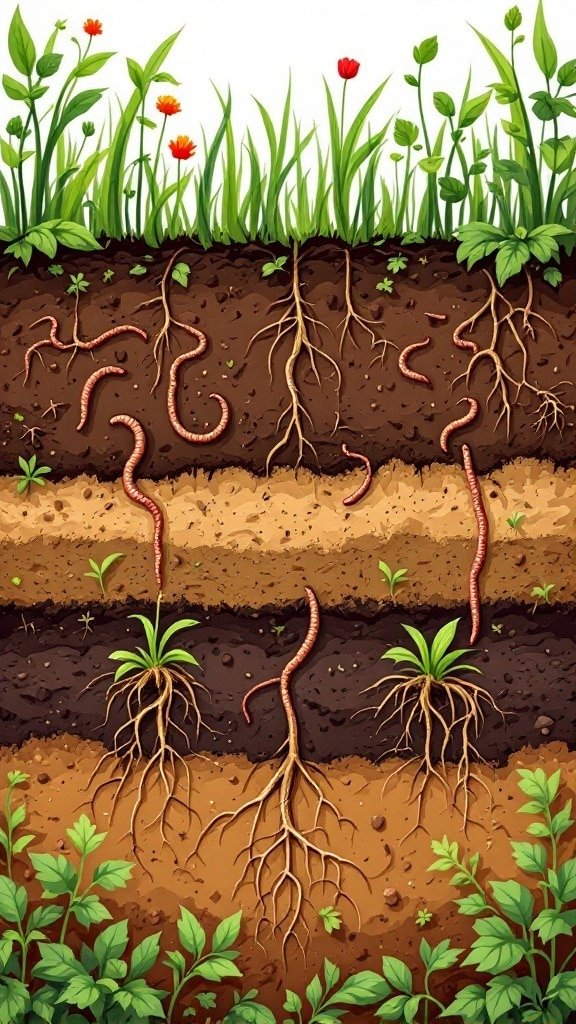
No dig gardening is a simple way to grow plants without disturbing the soil too much. The image shows different layers of soil, packed with roots and worms. These layers tell a story about how healthy soil can support plant life.
The top layer is filled with vibrant green plants and flowers, indicating a thriving ecosystem. Below, you can see the roots weaving through the soil, showing how plants connect with their environment.
Worms play an essential role in this setup. They aerate the soil, helping it drain and retain moisture, which benefits plant growth. By leaving the soil undisturbed, you keep these natural processes intact.
Maintaining Soil Health
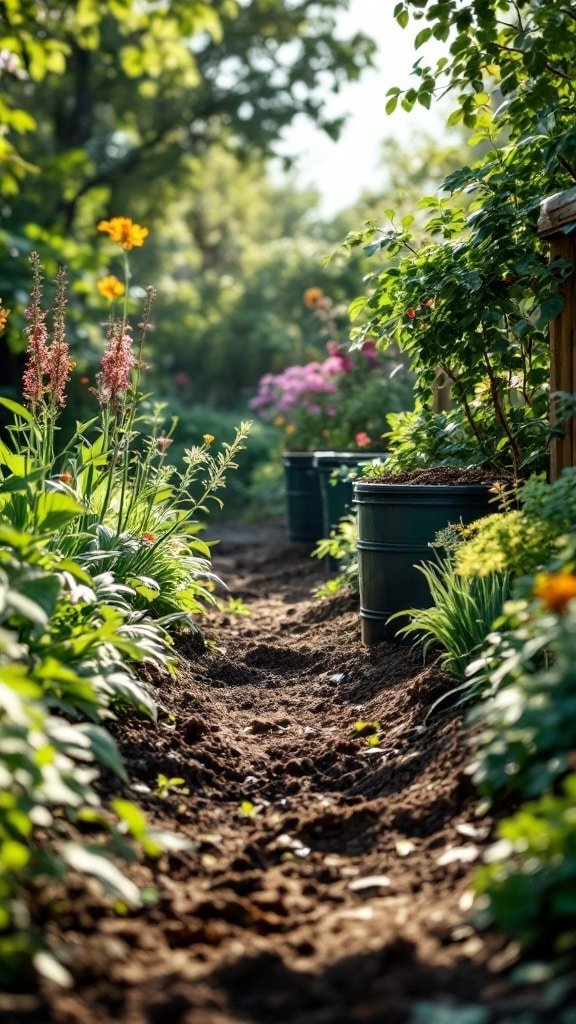
No dig gardening is a fantastic way to keep your soil healthy and thriving. The image shows a beautiful garden path, lined with vibrant flowers and healthy plants. With proper maintenance, your garden can flourish like this every season.
One key to maintaining soil health is to avoid compacting it. Walking on garden beds can lead to hard soil, making it difficult for roots to grow. Stick to paths like the one in the picture to protect your plants.
Composting is another great tip. Adding organic matter to your soil naturally enriches it. You can use kitchen scraps, leaves, or grass clippings. This not only nourishes the soil but also helps retain moisture.
Mulching is another important practice. A layer of mulch around your plants can prevent weeds and keep the soil temperature consistent. Plus, it looks great, just like the tidy arrangement shown here.
Lastly, consider crop rotation. Changing the types of plants in specific areas each season can prevent nutrient depletion. It’s a simple step that has a big impact on soil health.
Selecting the Right Materials
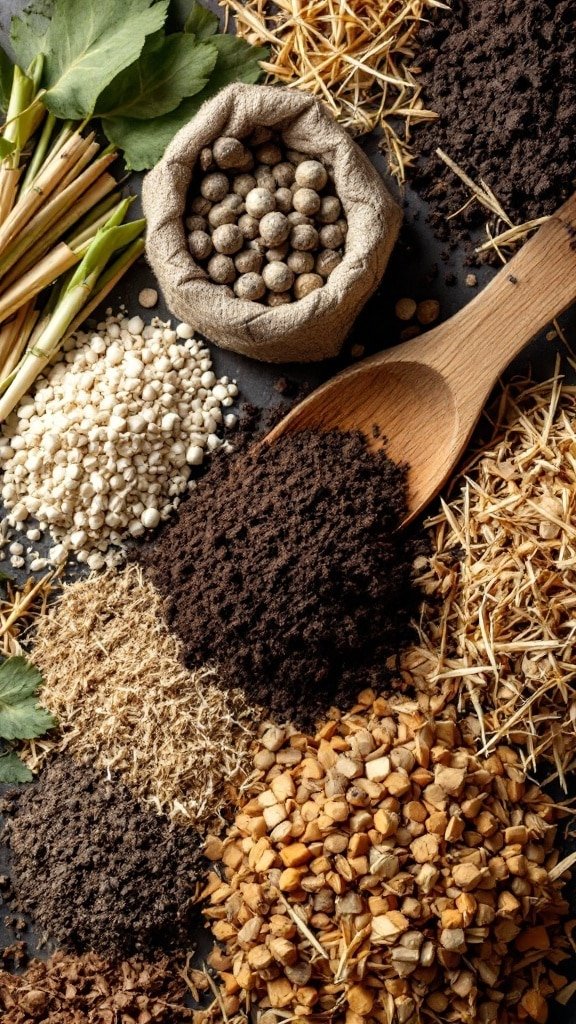
When starting a no dig garden, choosing the right materials is key. The image shows various organic materials like straw, soil, and wood chips. These items create a rich, layered environment for plants to thrive.
Begin with a base layer of cardboard or newspaper to suppress weeds. Add layers of compost, straw, and other organic matter. This approach will improve soil health over time. Each layer contributes to a nutrient-rich environment for your plants.
Don’t forget about mulch! It helps retain moisture and keeps weeds at bay. Materials like leaves or grass clippings are great choices.
Layering for Success
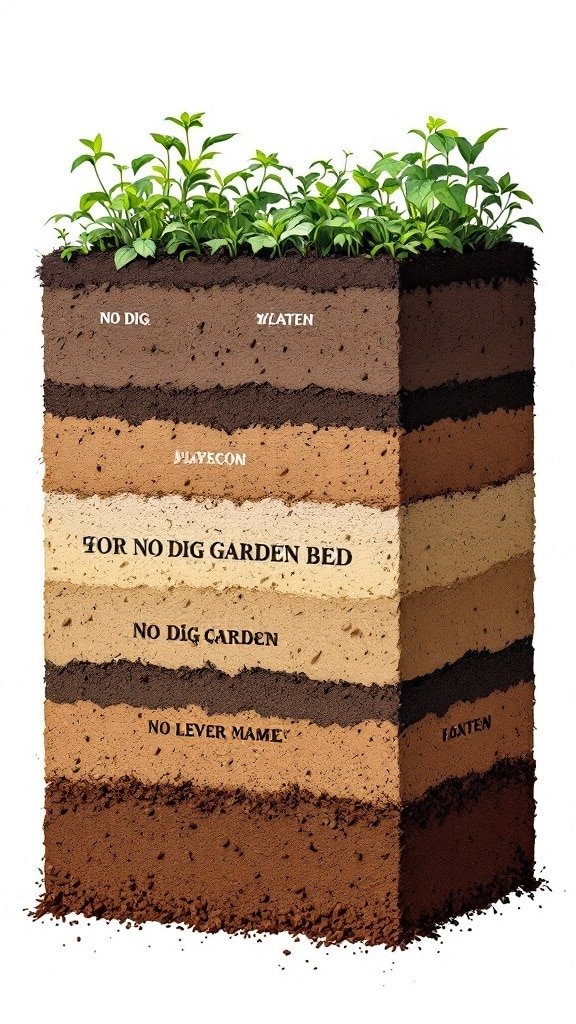
In no dig gardening, layering is key. The image showcases various soil layers, each contributing to a healthy garden. Starting with a base of organic matter, you can build layers that nourish plants naturally. This method helps retain moisture and reduces weeds, making your gardening easier.
Begin with a compost layer at the bottom. Then, add cardboard or newspaper to suppress weeds. Top it off with rich soil and organic materials like straw or leaves. Each layer plays a vital role in creating a thriving garden.
Maintenance is simple. Water your garden regularly, especially during dry spells. Adding mulch can help with moisture retention and weed control. Also, keep an eye on pests and diseases; early detection can save your plants.
With minimal effort, you can enjoy a flourishing garden. Layering makes it possible to grow a variety of plants, ensuring a bountiful harvest.
Choosing the Right Location
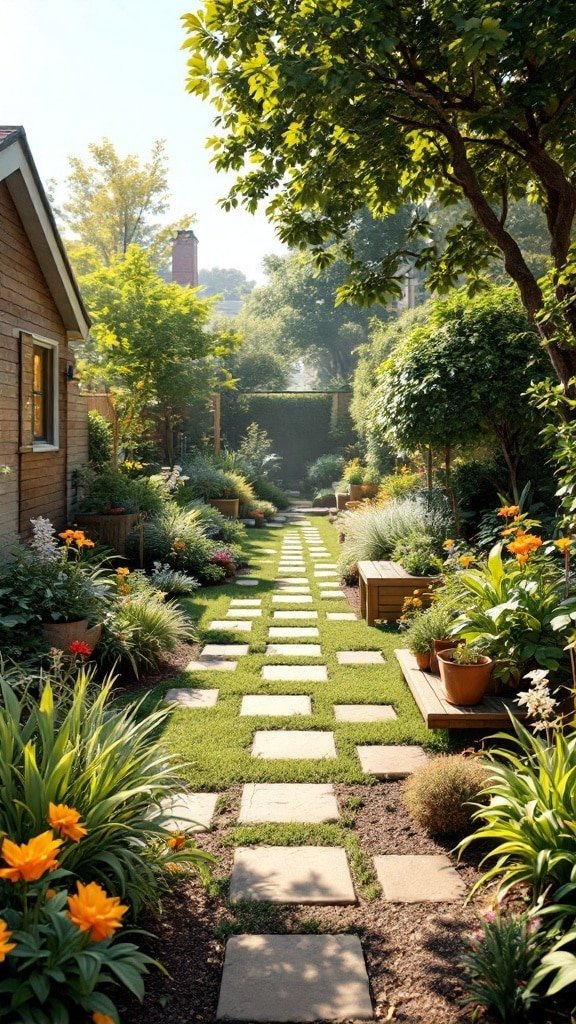
Finding the perfect spot for your no dig garden is key to success. The image showcases a beautiful garden path lined with vibrant flowers and greenery. This inviting space is a great example of how thoughtful placement can create a flourishing garden.
When choosing a location, look for a spot that gets plenty of sunlight. Most vegetables and flowers thrive with at least six hours of sun each day. Observe the area throughout the day to see how sunlight moves. This will help you determine the best places for planting.
Also, consider access to water. A nearby hose or rain barrel is ideal. It makes maintenance easier, ensuring your plants get the moisture they need without too much hassle.
Soil drainage is another factor. If your chosen area holds water after rain, it could harm your plants. You can improve drainage by adding organic matter to the soil or adjusting the garden’s layout.
Don’t forget about protecting your garden from harsh winds or pests. If possible, plant a barrier of taller plants or shrubs around the edges to offer some shelter.
Once your garden is in place, maintenance becomes important. Regularly check for weeds, remove them promptly, and ensure your plants have enough nutrients. Mulching can help retain moisture and reduce weed growth.
Finally, enjoy the process! Gardening is a journey filled with learning. The more you care for your space, the more it will thrive, just like the lovely garden in the image.
Benefits of No Dig Gardening
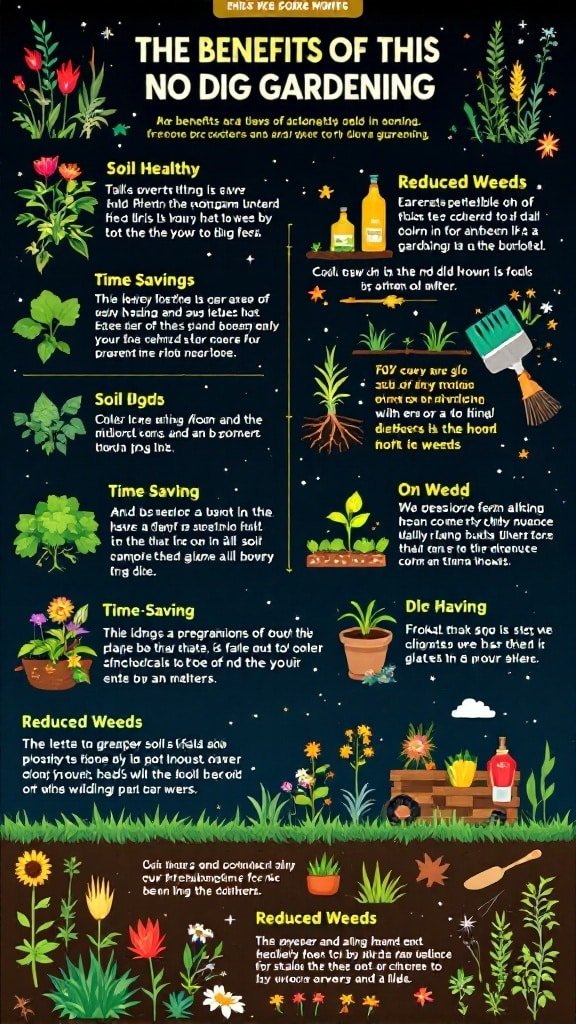
No dig gardening comes with a variety of perks that make it an attractive choice for many. The image highlights several benefits that make this method stand out. First, it emphasizes how this technique keeps soil healthy. By avoiding digging, you preserve the natural structure of the soil, allowing earthworms and beneficial microbes to thrive. This leads to a richer, more fertile ground for your plants.
Time savings are another major advantage. Without the need to till or overturn the soil, you can spend more time enjoying your garden rather than preparing it. This method simplifies the gardening process, making it a breeze for both new and seasoned gardeners.
Weed control is a biggie too! The image shows how no dig gardening helps reduce the number of weeds you have to deal with. With layers of organic material on top of the soil, weeds find it hard to sprout. Less weeding means more time to relax in your blooming garden.
Soil compaction is also reduced, allowing for better drainage and root development. This is especially beneficial for plants that require a lot of space to grow. Plus, it helps in retaining moisture, which is vital during dry spells.
Lastly, maintenance is a breeze with no dig gardening. To keep your garden thriving, simply add organic mulch or compost periodically. This not only nourishes your plants but also keeps weeds at bay. Regularly checking for pests and disease, along with watering when needed, completes your easy garden upkeep.
Watering Strategies for No Dig Gardens
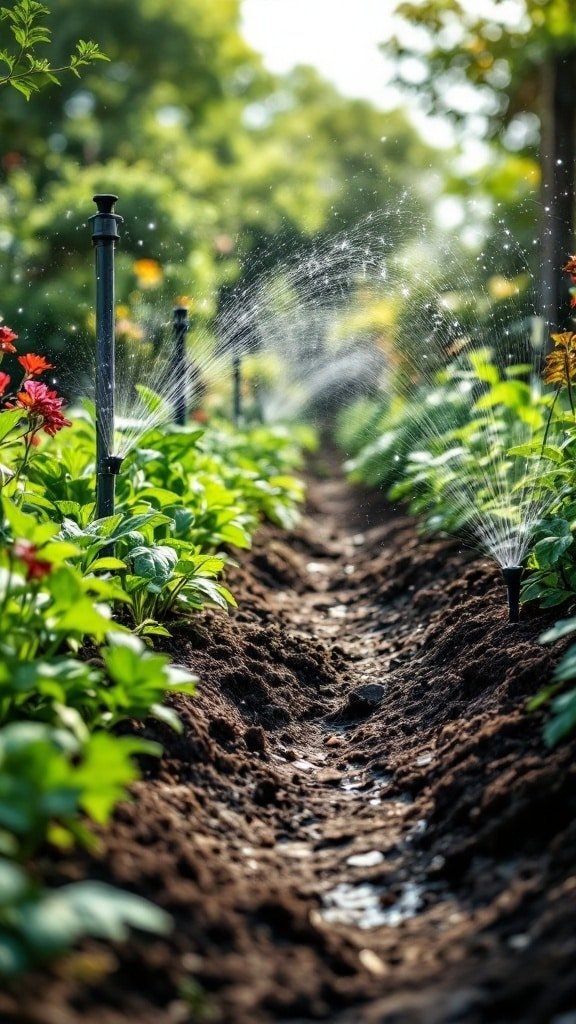
Efficient watering is key to keeping a no dig garden thriving. In the image, we see a lush garden with sprinklers gently watering rows of healthy plants. This method is not only effective but also saves time.
One great strategy is to use drip irrigation. This system delivers water directly to the roots, reducing waste. It’s perfect for a no dig setup since you won’t be disturbing the soil. You can also set timers to ensure your plants receive the right amount of water consistently.
Another option is to schedule watering in the early morning or late afternoon. This helps to minimize evaporation and ensures your plants soak up as much moisture as possible.
Companion Planting in No Dig Gardens
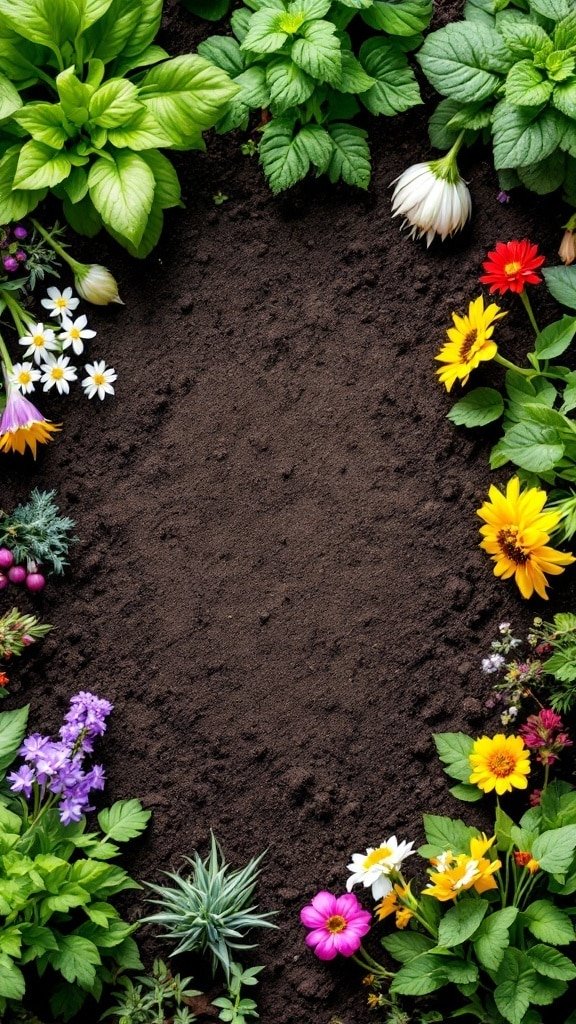
No dig gardening is a fantastic way to grow your plants without disturbing the soil. Companion planting fits perfectly into this method. It involves pairing plants that benefit each other, enhancing growth, deterring pests, and improving soil health.
In the image, you see a vibrant array of flowers and herbs surrounding a patch of rich soil. These plants are not just beautiful; they can also work together. For example, planting basil with tomatoes can boost tomato flavor and deter pests.
Creating a no dig garden means you can layer organic matter on top of existing soil. This helps retain moisture and adds nutrients without the need to till. Just make sure to choose companions that thrive in similar conditions!
To maintain your no dig garden, regular watering is key. Keep an eye out for weeds, but don’t worry! Most will be easy to pull out. Adding a layer of mulch can help suppress weeds while adding organic material to the soil.
Lastly, don’t forget about monitoring plant health. If one plant looks unwell, it might affect its companions. Keeping an eye on your garden ensures everything grows together harmoniously.
Incorporating Perennials into No Dig Gardens
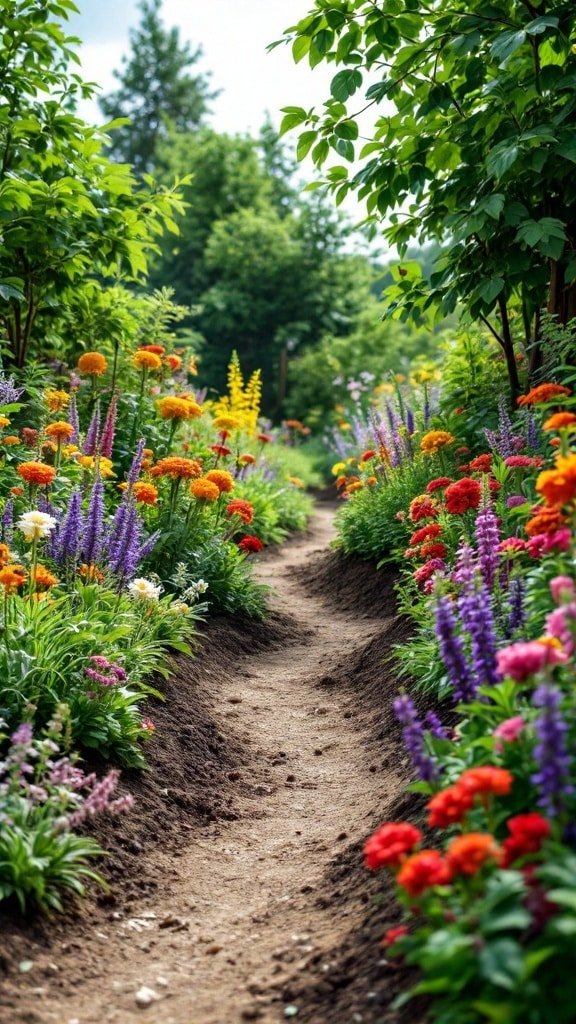
No dig gardening is a fantastic way to create beautiful spaces without disturbing the soil too much. The image shows a vibrant garden lined with colorful perennials that are perfect for these types of gardens. These plants add bursts of color and texture, making the garden inviting and lively.
When choosing perennials, opt for varieties that thrive in your climate. Look for plants like lavender, daylilies, and coneflowers. They not only provide beauty, but they also require less maintenance once established. If you plant them in clusters, they can create stunning visual effects.
Maintaining a no dig garden with perennials is pretty straightforward. Regularly check the soil moisture and make sure the plants are getting enough water, especially during dry spells. Mulching around your plants can help retain moisture and suppress weeds. This simple step can keep your garden looking tidy and healthy.
Lastly, don’t forget to deadhead your perennials. This encourages more blooms and keeps your garden looking fresh. A little care goes a long way in making sure your no dig garden flourishes!
Harvesting Techniques for No Dig Crops
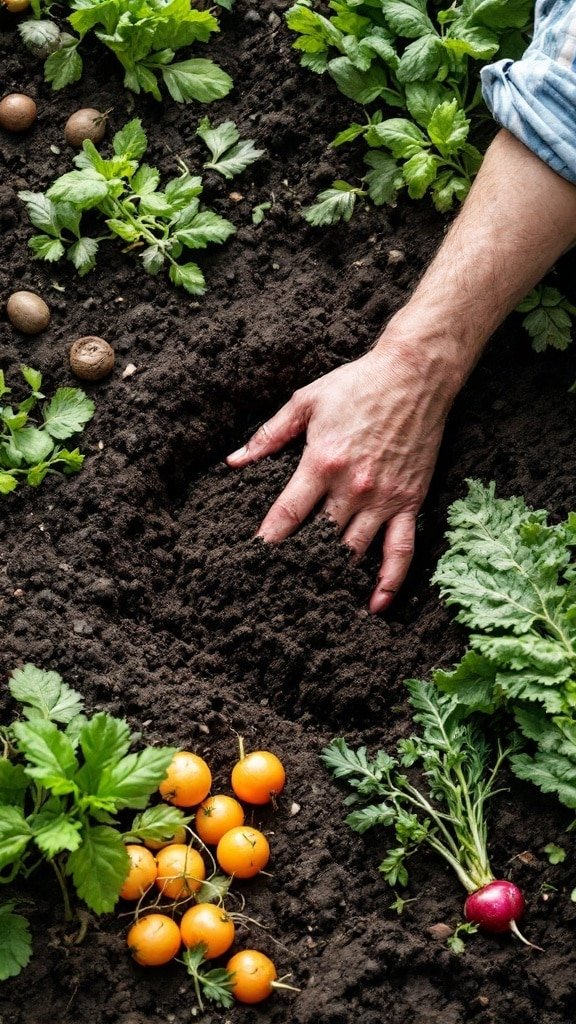
No dig gardening offers a simple and efficient way to grow your food. The image shows a hand gently digging into rich soil surrounded by vibrant green plants and fresh vegetables. This method keeps the soil structure intact, promoting healthy root systems.
Harvesting no dig crops is all about being gentle. Use your hands or a small fork to loosen the soil around the roots. This technique helps avoid damaging the plants. Gather vegetables like radishes, carrots, and tomatoes by pulling them gently from the earth, ensuring you keep the roots intact.
It’s essential to keep your garden well-maintained. Regularly check for weeds and remove them by hand to keep your plants healthy. Water your crops consistently to keep the soil moist, especially during dry spells. Adding a layer of mulch can also help retain moisture and suppress weeds.
As you enjoy your harvest, remember to rotate your crops each season. This practice improves soil health and reduces pest problems. With these techniques, you can enjoy a bountiful garden without the hassle of traditional digging methods.
Seasonal Planting in No Dig Gardens
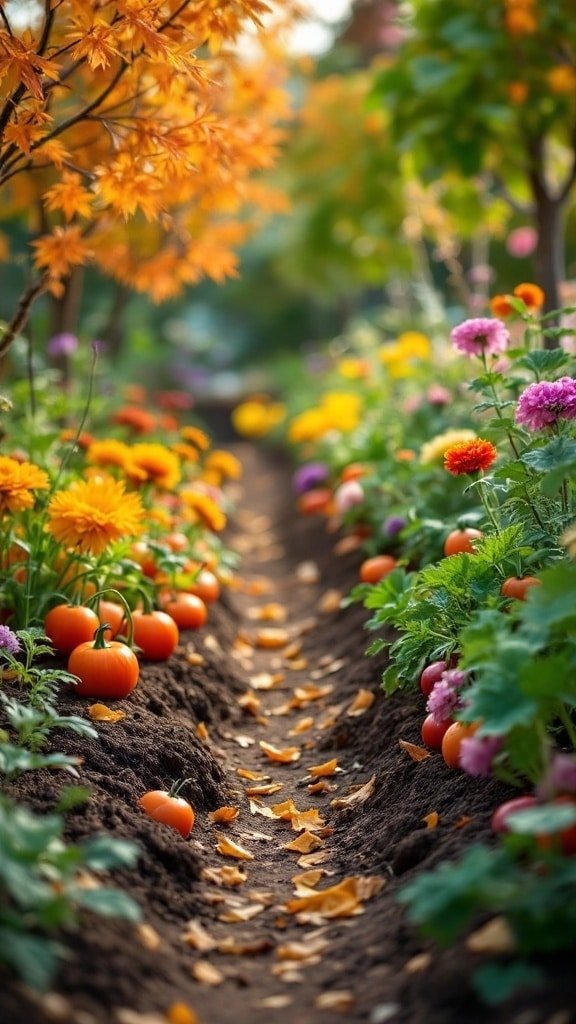
No dig gardens are a fantastic way to grow plants with minimal disturbance to the soil. The image captures a lovely path lined with pumpkins and vibrant flowers, showcasing the beauty of seasonal planting. You can see bright orange pumpkins nestled among colorful blooms, all surrounded by autumn leaves. This creates a warm and inviting atmosphere, perfect for a fall garden.
When planting in a no dig garden, focus on the seasons. For fall, consider planting vegetables like kale and spinach. They thrive in cooler temperatures and can be harvested throughout the winter. Flowers like chrysanthemums can also add a pop of color during this time.
Maintenance is key to keeping your no dig garden thriving. Regularly check for weeds and pull them by hand to prevent competition for nutrients. A layer of mulch can help suppress weeds and retain moisture in the soil.
Another tip is to keep an eye on your plants as they grow. Make sure they are getting enough sunlight and water. If you notice some areas are struggling, consider moving plants around to maximize their exposure.
With a little care, your no dig garden can flourish season after season, bringing joy and beauty to your outdoor space.
Pest Management without Digging
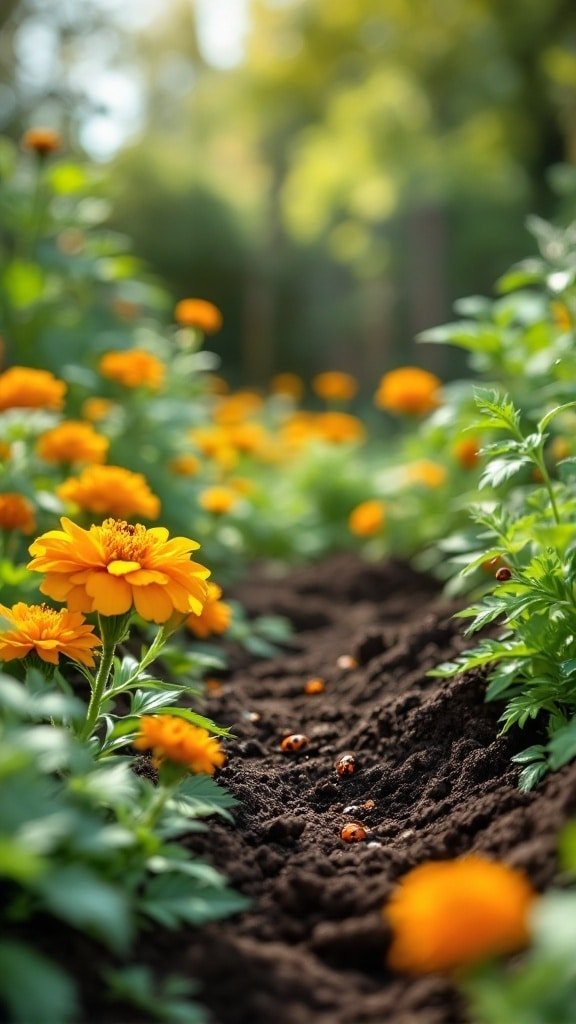
No dig gardening focuses on maintaining soil structure and health without traditional digging methods. This image beautifully illustrates a vibrant garden filled with marigolds and ladybugs. The rich, dark soil is visible, showing off a thriving ecosystem where plants can flourish.
In a no dig garden, using companion planting is a smart way to manage pests. Marigolds are known to repel certain insects, making them a perfect addition to your garden. They attract beneficial bugs, like ladybugs, which help keep harmful pests at bay.
Regular maintenance is key. Watering your plants consistently while keeping an eye on soil moisture can prevent stress on your plants. Mulching is another great method. It helps retain moisture, suppress weeds, and add nutrients back into the soil as it breaks down.
Another tip is to introduce beneficial insects. Ladybugs, lacewings, and parasitic wasps can naturally control pest populations. You can create a welcoming environment for these helpers by planting a variety of flowers and herbs.
Remember to also observe your plants closely. Watch for any signs of distress or pest presence. Early detection can make a big difference in managing any issues that arise.
Sustainable Practices for No Dig Gardening
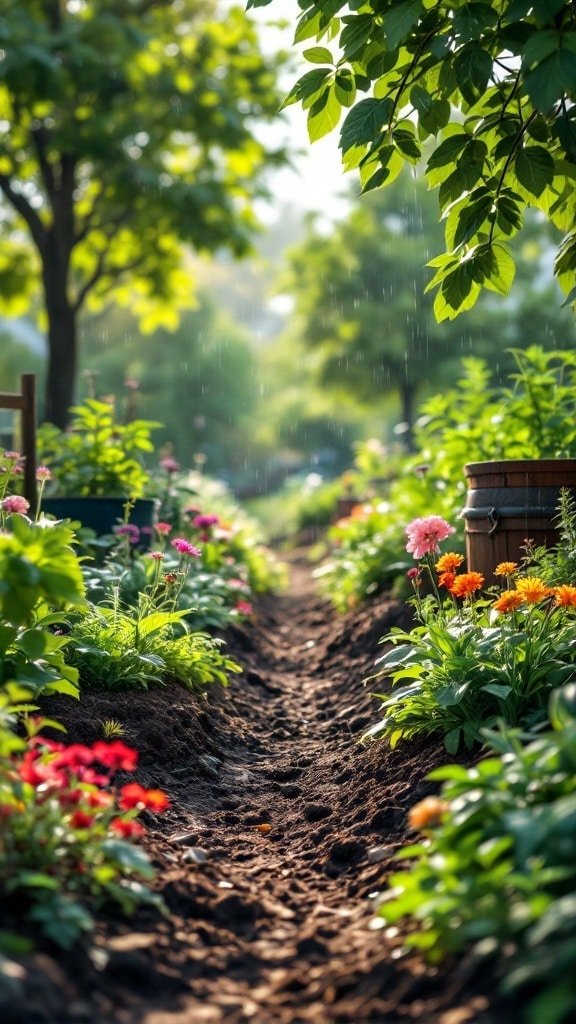
No dig gardening is a fantastic way to grow plants while keeping the soil healthy. The image captures a vibrant garden path surrounded by colorful flowers and lush greenery. This visual represents the beauty and simplicity of no dig gardening.
One of the main ideas behind this practice is to minimize soil disturbance. Instead of tilling, you layer organic materials. Start with cardboard or newspaper to suppress weeds, then add compost or well-rotted manure. This method enriches the soil without the need for digging and helps retain moisture.
As you maintain your no dig garden, it’s important to keep an eye on the layers. Make sure they’re thick enough to prevent weeds but not too compacted that they block airflow. Regularly adding organic matter will help keep your soil healthy.
Watering is another crucial aspect. Ensure your plants get enough moisture, especially during dry spells, but avoid overwatering. A good practice is to check the top inch of soil; if it’s dry, it’s time to water.
Be mindful of pests. Using companion planting can help deter unwanted insects. For example, planting marigolds alongside vegetables can keep certain bugs at bay. This method not only protects your plants but also adds beauty to your garden.
Lastly, don’t forget to enjoy the process. Spend time in your garden, take note of what works, and adjust as needed. Gardening is not just about the end results; it’s about nurturing growth and finding joy in the journey.


